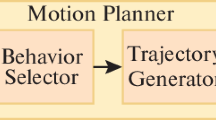
Overview
- Presents the latest developments from industry and research on automated driving and artificial intelligence
- Provides in introduction to current knowledge in neural networks and AI
- Provides a basis for future research and a guide for practitioners in industry
- This book is is open access which means you have free and unlimited access
Buy print copy
Tax calculation will be finalised at checkout
About this book
This open access book brings together the latest developments from industry and research on automated driving and artificial intelligence.
Environment perception for highly automated driving heavily employs deep neural networks, facing many challenges. How much data do we need for training and testing? How to use synthetic data to save labeling costs for training? How do we increase robustness and decrease memory usage? For inevitably poor conditions: How do we know that the network is uncertain about its decisions? Can we understand a bit more about what actually happens inside neural networks? This leads to a very practical problem particularly for DNNs employed in automated driving: What are useful validation techniques and how about safety?
This book unites the views from both academia and industry, where computer vision and machine learning meet environment perception for highly automated driving. Naturally, aspects of data, robustness, uncertainty quantification, and,last but not least, safety are at the core of it. This book is unique: In its first part, an extended survey of all the relevant aspects is provided. The second part contains the detailed technical elaboration of the various questions mentioned above.Similar content being viewed by others
Keywords
Table of contents (15 chapters)
-
Front Matter
-
Safe AI—An Overview
-
Front Matter
-
-
Recent Advances in Safe AI for Automated Driving
-
Front Matter
-
Editors and Affiliations
About the editors
Bibliographic Information
Book Title: Deep Neural Networks and Data for Automated Driving
Book Subtitle: Robustness, Uncertainty Quantification, and Insights Towards Safety
Editors: Tim Fingscheidt, Hanno Gottschalk, Sebastian Houben
DOI: https://doi.org/10.1007/978-3-031-01233-4
Publisher: Springer Cham
eBook Packages: Engineering, Engineering (R0)
Copyright Information: The Editor(s) (if applicable) and The Author(s) 2022
Hardcover ISBN: 978-3-031-01232-7Published: 18 June 2022
Softcover ISBN: 978-3-031-01235-8Published: 18 June 2022
eBook ISBN: 978-3-031-01233-4Published: 17 June 2022
Edition Number: 1
Number of Pages: XVIII, 427
Number of Illustrations: 14 b/w illustrations, 103 illustrations in colour
Topics: Automotive Engineering, Mathematical Models of Cognitive Processes and Neural Networks, Image Processing and Computer Vision, Data Engineering



